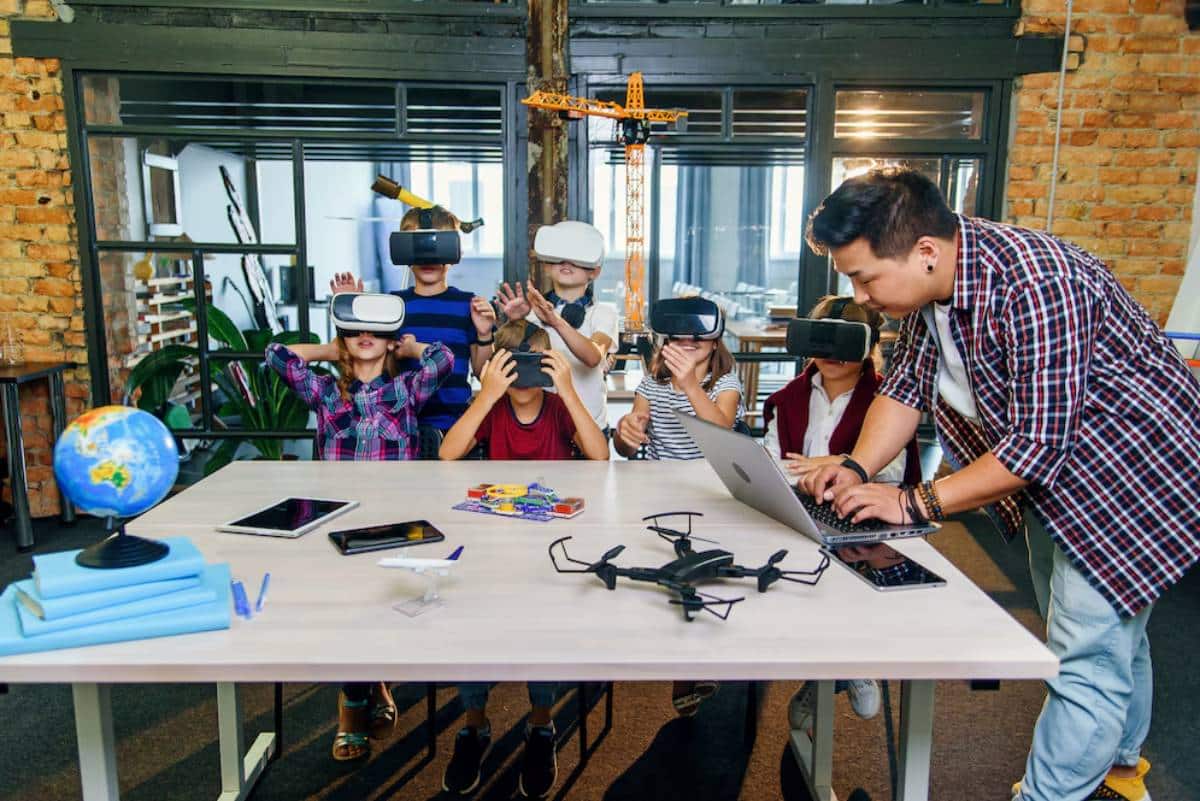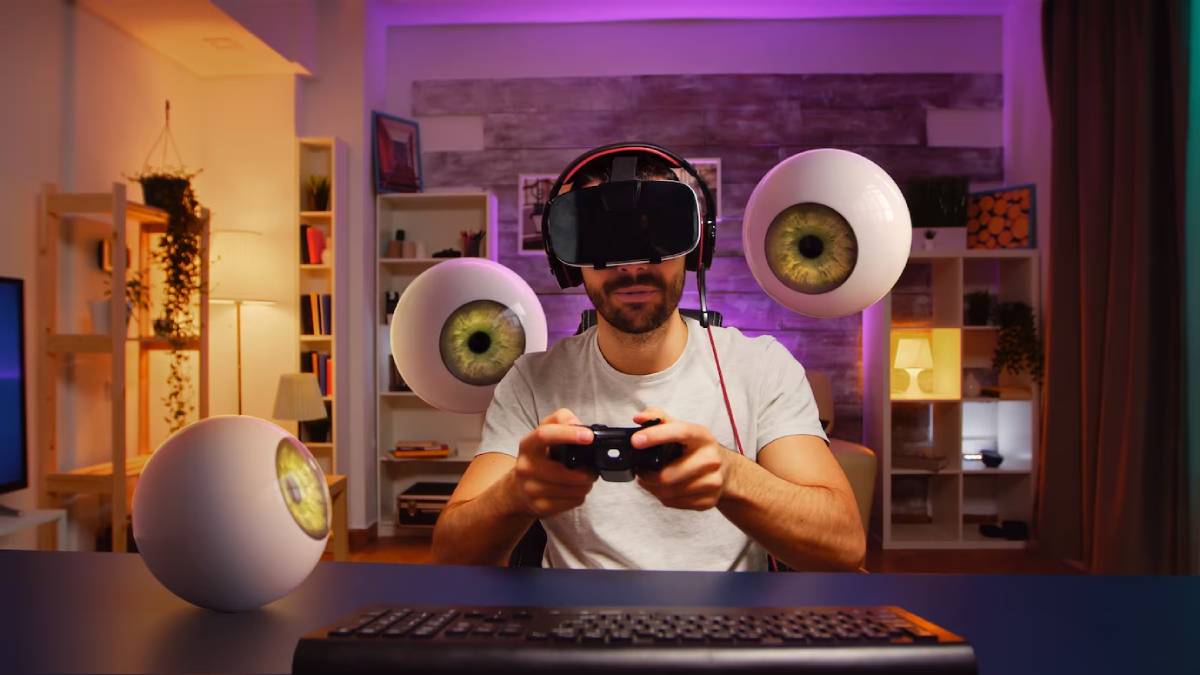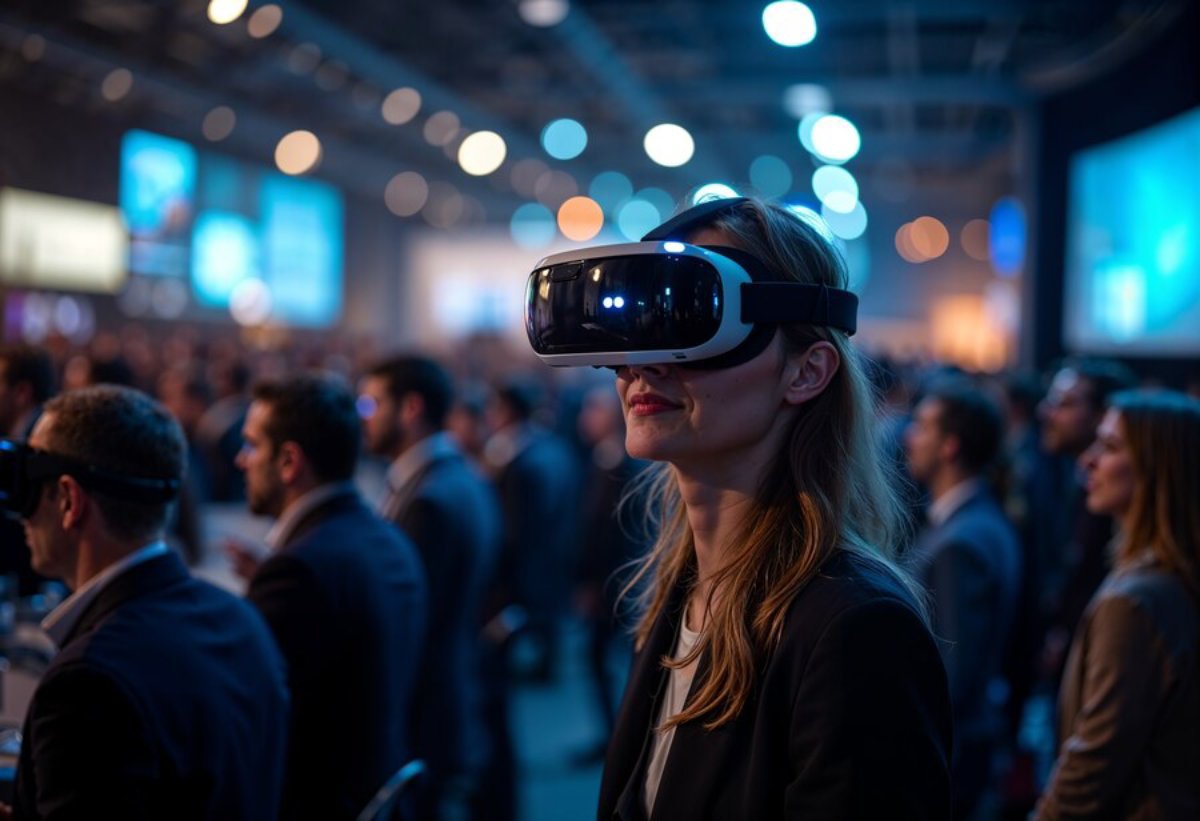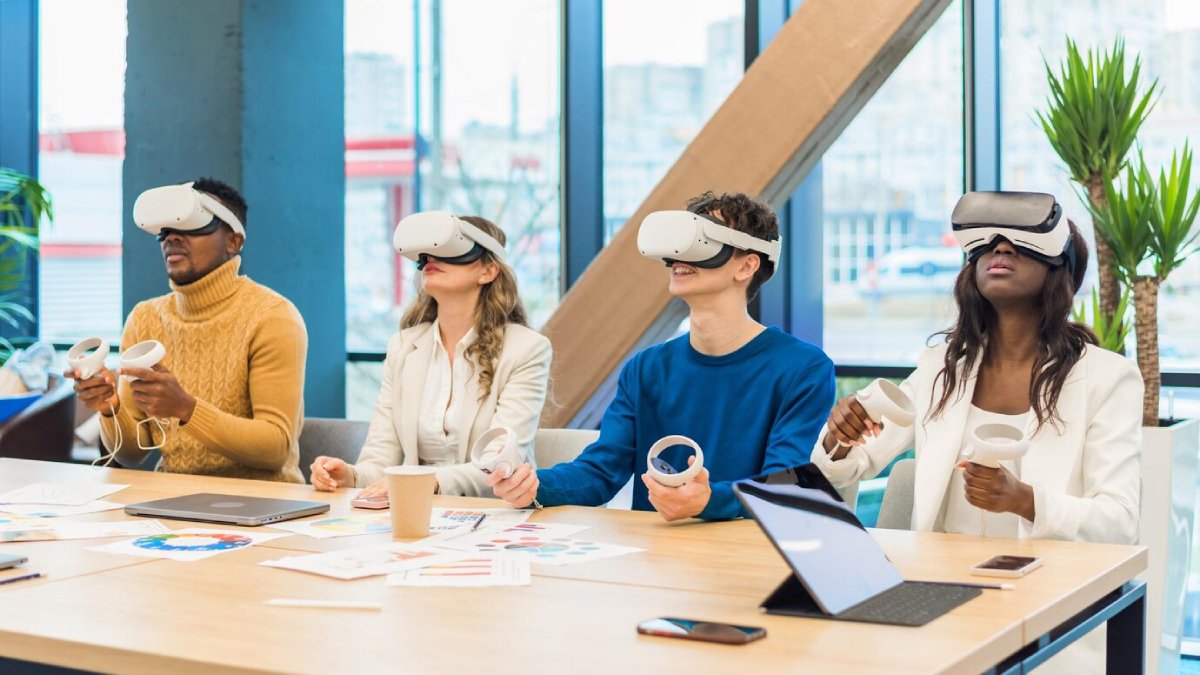
Virtual Reality Classrooms: The Future of Remote Learning
Education has experienced massive changes recently. Technology controls a vital part of learning and sharing knowledge. One of the most remarkable developments is using virtual reality (VR) in schools. VR classrooms are revolutionising remote learning. They claim they will transform our remote learning. So, the pedagogy becomes more engaging and immersive with virtual education technology. It enables students to explore subjects interactively in ways we could never have imagined.
The world is adapting to remote learning, and the pandemic has accelerated this shift. VR classrooms have become a leading option. They offer a dynamic space that breaks geographical limits and changes a classroom’s meaning. Despite the excitement, many people misunderstand how feasible and accessible VR is in education. This blog explores how VR classrooms affect remote learning, looking at the benefits and challenges we may face.

Key Benefits / Why It Matters
Transforming the Learning Experience
Integrating VR classrooms into remote learning environments is not merely an enhancement of existing educational methods but a complete transformation. Traditional teaching methods often rely on passive learning, where students receive information. VR classrooms provide active learning. Here, students engage with content in a 3D space. This immersive environment lets learners engage with complex ideas, like historical events or scientific phenomena. This interaction helps improve understanding and retention.
Moreover, virtual education technology enables the creation of customised learning experiences. In a VR classroom, educators can tailor content to meet students’ diverse needs, accommodating different learning styles and paces. This personalisation fosters a more inclusive learning environment where every student has the opportunity to thrive.
Breaking Geographical Barriers
One of the most significant advantages of VR classrooms is their ability to eliminate geographical constraints. Students in remote areas can now join classes taught by top educators worldwide. They may not have had access to quality educational resources before. This democratisation of education ensures that knowledge is not limited by location, providing equal opportunities for all students to excel. VR classrooms resolve any language barrier and provide students a better understanding of the concept.
Additionally, VR classrooms facilitate collaboration among students from different cultural backgrounds, promoting a global perspective and fostering cross-cultural understanding. Students can gain insights into diverse cultures and viewpoints by participating in virtual exchanges, preparing them for a globalised world.
Enhancing Engagement and Motivation
Engagement is a critical factor in the success of remote learning, and VR classrooms excel at capturing students’ attention. Virtual education technology makes learning fun and exciting, like exploring a new world. This heightened engagement translates into increased motivation, as students are more likely to participate actively and invest effort in their studies.
Also, VR classrooms give quick feedback. This helps students learn from their mistakes right away. This immediate response fosters a growth mindset, encouraging students to embrace challenges and view failures as opportunities for improvement.
Additional Expert Tips & Common Mistakes to Avoid
Best Practices for Implementing VR Classrooms
Several best practices can enhance the effectiveness of VR classrooms for educators and institutions planning to incorporate them into their curricula. Firstly, ensuring that the VR content aligns with educational objectives and complements the existing curriculum is essential. VR should not be used as a standalone tool but integrated seamlessly into the broader educational framework.
Secondly, training for both educators and students is crucial. Educators must be proficient in using VR technology to maximise its potential, while students need guidance on navigating and utilising the virtual environment effectively. Comprehensive training sessions and support resources can facilitate a smooth transition to VR classrooms.
Common Mistakes and Misconceptions
Despite VR classrooms’ promising potential, there are common mistakes and misconceptions that can hinder their effectiveness. One prevalent misconception is that VR is too expensive and inaccessible for most educational institutions. While it is true that the initial investment can be high, the long-term benefits and cost savings from reduced physical infrastructure and travel can offset these expenses. Additionally, VR equipment costs are expected to decrease as technology advances, making it more accessible to a broader audience.
Another mistake is underestimating the importance of content quality. The success of VR classrooms hinges on the availability of high-quality, engaging content that aligns with educational goals. Institutions must invest in developing or sourcing quality content to ensure a meaningful learning experience.

Advanced Insights / Expert Recommendations
Leveraging Data and Analytics
One of the lesser-known advantages of VR classrooms is the ability to leverage data and analytics to enhance the learning experience. By tracking student interactions and performance within the virtual environment, educators can gain valuable insights into learning patterns and identify areas for improvement. This data-driven approach allows for personalised feedback and targeted interventions, ultimately improving student outcomes.
Furthermore, analytics can inform curriculum development, enabling educators to refine and adapt content based on student needs and preferences. By continuously analysing data, institutions can ensure that their VR classrooms remain relevant and effective in meeting educational objectives.
Collaborating with Industry Experts
To maximise the potential of VR classrooms, educational institutions should consider collaborating with industry experts and technology providers. These partnerships can facilitate cutting-edge content development and provide access to the latest advancements in virtual education technology. By staying at the forefront of innovation, institutions can offer students a world-class learning experience that prepares them for the future.
Embracing the Future of Education
To sum up, VR classrooms transform remote learning. These provide fantastic opportunities for engagement, accessibility, and personalisation. Use of Virtual Education Technology to Create a More Inclusive and Effective Learning Environment As schools encounter challenges of remote learning
But on the precipice of this thrilling new chapter, educators, policymakers, and technology providers need to work collectively and allocate resources toward the design and execution of the VR classroom. That enables us to ensure that education empowers students, transcends borders , and motivates a lifelong love of learning.
Are you ready to embrace the future of education? Explore the possibilities of VR classrooms and join the revolution in remote learning today!


